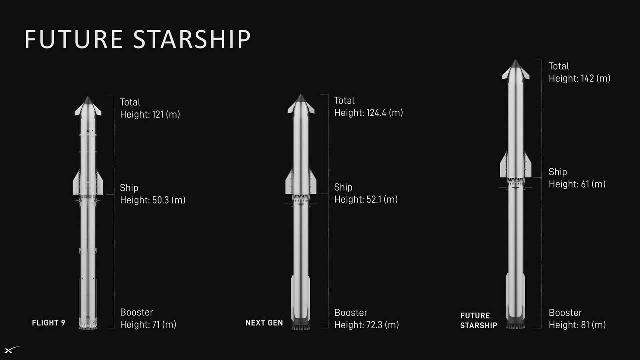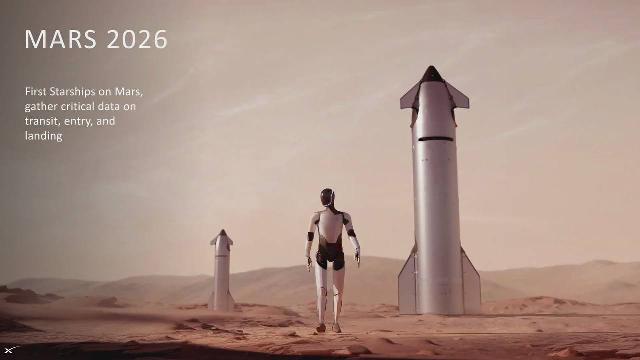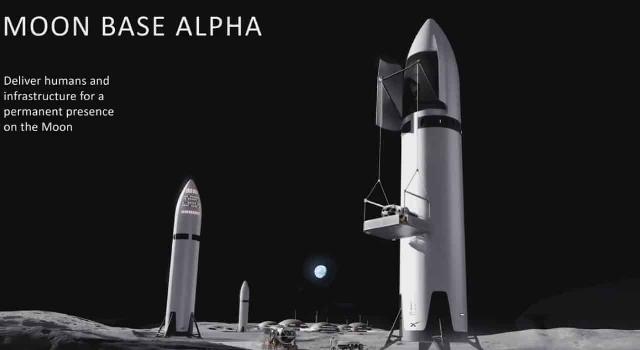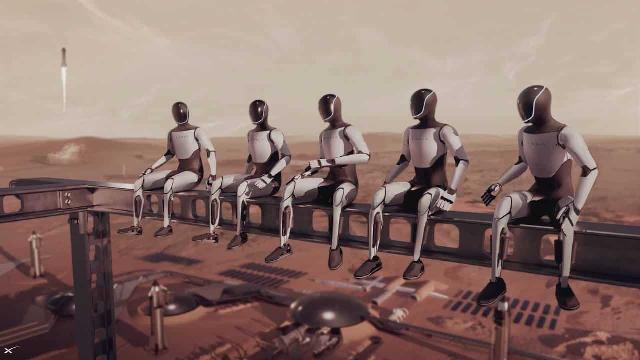In a lengthy speech on May 30, 2025, Elon Musk did not limit himself to repeating what was already known, but also outlined a number of new points about the Starship program and the specifics of the first few waves of flights to Mars.
The chief engineer of SpaceX described both the technical prospects of the Starship program and plans for flights to Mars before the early 2030s. First, he presented the general appearance of the second version of Starship, which is scheduled to begin testing later this year. The updated first stage (Super Heavy) will carry 3,650 tons of fuel (currently only 3,500 tons), although it will increase in height by less than three meters. The second stage will carry 1,550 tons of fuel (50 tons more than before), although its height has hardly changed at all.
The third version of Starship will increase the mass of fuel in the first stage to 4,000 tons, and in the second by about 20 percent (almost 1,900 tons). This will significantly increase the payload launched into orbit. The height of the rocket will increase to 142 meters, that is, by 20 meters relative to the current one. The first stage will be above 80 meters, the second — above 60.

A recently flown (mostly unsuccessful) version of the rocket is shown on the left. The center indicates the option that will be tested in late 2025 and early 2026. On the right is a promising Starship variant, which will become the main one for the second and third waves of flights to Mars.
Image source: SpaceX
Musk did not specify a specific payload in low—Earth orbit for the second version of Starship, but the third one will have to carry at least 200 tons in a reusable configuration, and 400 in a single-use configuration. These are extremely ambitious figures, about twice (reusable) and four times (disposable) higher than the largest rockets from the pre-Soviet era.
He considers the key factor in the success of the company's new rockets to be not only the growth of their size and, due to this, the increase in payload, but also the improvement of engines to the Raprot 3 version. Musk said that the latter already have 16,000 seconds of total test time, which is a lot. One of their advantages will be the lack of thermal protection, since now all the heat will be removed from them due to cooling with the same cryogenic fuel that they use for work.
As a result of the abandonment of thermal protection, firstly, the mass of the Starship will decrease by 40 tons (there are about four dozen engines in both stages). And this will raise its payload by 40 tons. Secondly, without thermal protection, small fuel leaks, which led to the loss of starships during this year's tests, will not be able to lead to an accident, since the leaking gases will be carried away as the rocket moves. Now, due to thermal protection, they can accumulate in the immediate vicinity of the engine.
The most speculative part of the speech was devoted to the dates of sending ships to Mars in the coming years, as well as the number of ships sent. SpaceX's chief engineer believes that the company has a good chance of sending the first five Starships to the fourth planet at the end of 2026. Each of them will carry 10 tons of payload, that is, they will deliver a total of 50 tons there. The key goal of this first wave of flights will be to practice the landing itself. In particular, the ships will have thermal protection tiles that are equally capable of surviving both a landing on Mars and on Earth.

The task of the first wave of flights to the fourth planet will mainly be to test the Starship's ability to survive braking against the Martian atmosphere and then land
Image source: SpaceX
In late 2028 or early 2029 (the next launch window to the Red Planet), he plans to send 20 ships there with 75 tons of payload each. Fifteen hundred tons of cargo will include not only Optimus robots (they should be on the first wave of ships at the end of 2026), but also a lot of equipment to ensure the survival of people there.
Finally, in the launch window of 2030-2031, 100 ships will fly there, with 150 tons of payload on each (15 thousand tons). They will deliver fuel production equipment on site. Construction equipment will also be delivered to align the landing sites for Starship, create basic roads, and so on. The first people should arrive in the third wave.
In 2028, 20 ships will deliver primary equipment to the planet and test the possibility of its robotic deployment. There still won't be any people there
Image source: SpaceX
This plan clarifies the previously obscure question of how SpaceX plans to produce fuel for the return flight of humans from Mars. Such an operation requires a serious power plant and chemical reactors for the Sabatier reaction. Their weight is very significant, which is why their delivery on one ship is out of the question. It is now clear that Musk considers it possible to deliver them on hundreds of ships at once and partially deploy them with humanoid robots, minimizing the involvement of humans in this process.
Nevertheless, we can confidently say that the timing of the plan is unrealistic. The chances of sending five Starships at the end of 2026 are much less than 50-50. The fact is that the second version of this ship will fly there. Which has not even been built yet: the first stage of the second version is still being made in the very first copy, and tests of a full-fledged Starship Block 2 will begin only at the end of 2025. It turns out that in just a year, the ship will need to work out both refueling in orbit and returning and landing on Earth.
This is quite problematic, since the heat shield is the most difficult place in the development of reusable space systems, and it has been tested to a very small extent. His debugging on the shuttle, we recall, failed: inter-flight maintenance there lasted for months and the reliability of the tiles still left much to be desired.

As a side goal of the Starship program, Musk mentioned the creation of a permanent base on the Moon. Although round residential modules are shown on the horizon, the meaning of their construction is actually not obvious: the residential volume of three ships in the render is four times larger than the ISS, that is, enough for dozens of people at the same time.
Image source: SpaceX
At the same time, if you move the launch plans to one launch window "to the right", they look more or less real. By the end of 2028 and the beginning of 2029, the heat shield and refueling in orbit will clearly have been worked out enough to send five ships to Mars. In 2031, there will be no unsolvable problems with sending 20 Starships in one wave, and in 2033 with a hundred. Musk's expected production rate of 1,000 such ships per year, however, is unlikely to be realized before the end of the 2030s.
Among other things, Musk mentioned, as a side project, the creation of an Alpha research Base on the Moon. Judging by the presentation, it is thought of as several Starship ships assembled in one place. Considering that the internal living volume of each of them is larger than that of the ISS (one thousand cubic meters), we are talking about a very large base for dozens of people. However, Musk paid almost no attention to her, since the Moon occupies very little space in his plans.
Alexander Berezin

